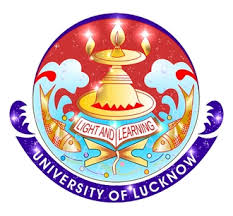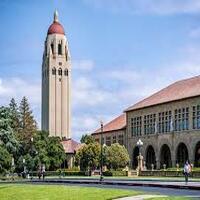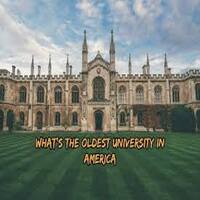Introduction: A Jewel in the Ivy League Crown
League Crown Nestled in the heart of New York City, Columbia University is one of America’s oldest and most prestigious institutions. Founded in 1754 as King’s College by royal charter, it has grown into a globally respected center for higher learning, research, and civic engagement. Today, Columbia consistently ranks among the top universities in the United States—frequently within the top 5 nationally and placed #6 by U.S. News & World Report, later ranking at #4 in some years (college.columbia.edu).
With its iconic Low Memorial Library steps and Morningside Heights campus, Columbia’s presence resonates across academia, politics, business, science, and the arts. Let’s explore what makes this university both uniquely historic and vibrantly modern.
A Storied History
Founding and Evolution (1754–1896)
- King’s College (1754–1784): Established under King George II’s charter, the institution embodied the educational ambitions of Colonial America.
- Post-Revolution Rebirth: After a hiatus during the Revolutionary War, it reopened as Columbia College under New York’s Board of Regents in 1784 (en.wikipedia.org).
- Expansion: During the 19th century, the college diversified academically and physically, eventually relocating from lower Manhattan to Morningside Heights in 1896, marking a new era.
20th Century to present
- Modern Push: With the likes of President Nicholas Murray Butler at the helm, Columbia embraced research and graduate education, bolstered by its expansion into Manhattanville.
- Landmark Programs: The mid-1900s saw Columbia advance fields like electrical engineering—most notably Edwin Armstrong’s FM radio breakthrough at Philosophy Hall (en.wikipedia.org, en.wikipedia.org)—and journalism, spawning the Pulitzer Prizes in the 1910s.
- Global Scale: The 21st century brought ambitious global partnerships, campus redevelopment, and continued academic refinement.
Campus: Urban Elegance Meets Intellectual Vigor
Morningside Heights: The Ideal Setting
Perched at 116th Street and Broadway, Columbia’s 36-acre campus merges ivy-clad architecture with the energy of New York City. It’s mere subway stops from iconic city landmarks, making cultural immersion effortless (appily.com, admissionsight.com).
Iconic Architecture and Gathering Spaces
- Low Memorial Library & Steps: These Roman‑inspired columns define the campus heart and serve as a central gathering spot for students (admissionsight.com).
- Alfred Lerner Hall: A postmodern student center designed by Bernard Tschumi, Lerner Hall is a social hub anchoring student life (en.wikipedia.org).
- Philosophy Hall: Home to humanities departments and the birthplace of FM radio, this building is a National Historic Landmark (en.wikipedia.org).
- Other Halls: Dorms like Wallach Hall are woven into campus lore—Jack Kerouac once lived there (en.wikipedia.org)—reflecting Columbia’s blend of academic rigor and rich storytelling.
Academics: Breadth, Depth, Rigor
Core Curriculum
Established in 1919, Columbia’s Core Curriculum ensures all undergraduates encounter foundational works in literature, philosophy, history, and science—a shared intellectual journey. Today’s freshmen dive into the Iliad under NSOP tradition, carrying forward the original voice of liberal arts (en.wikipedia.org).
College + Professional Schools
Comprising Columbia College, SEAS (Engineering), Journalism, Business, Law, Medicine, Social Work, and more, the institution offers 350+ majors and degrees across 20 schools .
- Humanities & Social Sciences: English, Philosophy, and History rank nationally in the top 10—Philosophy #2, English #1 in US rankings .
- Engineering & Architecture: Landmark campus buildings and top research outputs reflect Columbia’s leadership.
- Business School Move: In 2022, Columbia Business School relocated to Manhattanville, unveiling Kravis and Geffen Halls after a $600 million investment (en.wikipedia.org).
Faculty & Student Experience
With a student-teacher ratio near 6:1 and classes often under 20, students benefit from engagement with leaders in their fields (princetonreview.com). Alumni praise the high standards and strong faculty presence, although students must be proactive to succeed (princetonreview.com).
Selectivity & Prestige
- Ultra-competitive Admissions: With acceptance rates hovering around 4%, Columbia is among the most selective universities in the world (appily.com).
- High Entering Scores: SAT ranges typically trend between 1490–1570 and ACT 34–35 (niche.com).
- Rankings: While US News fluctuates between top‑5 and top‑20 rankings (a prior drop to #18 followed by a rebound to top 10), specialized programs remain consistently elite (collegeadvisor.com).
Campus Life, Culture & Traditions
Student Life
Columbia thrives on a balance of academic pressure and urban freedom. From Broadway outings to extensive networking dinners, there’s always something beyond the classroom .
Traditions
- First‑Year March: After orientation, freshmen walk from Lerner Hall to College Walk, greeted by applause, officially beginning their Columbia journey (en.wikipedia.org).
- Varsity Show: Dating to 1893, this satirical undergraduate musical has launched careers of artists like Rodgers, Hammerstein, and McKinnon (en.wikipedia.org).
- Joyce Kilmer Bad Poetry Contest: A delightfully awful poetry tradition since 1986 (en.wikipedia.org).
- Morningside Lights & Tree‑Lighting: Seasonal arts celebrations and festive ceremonies close the year with communal warmth (en.wikipedia.org).
Activism & Intellectual Freedom
Columbia is historically synonymous with student protest.
- 1968 Uprising: Students occupied Hamilton Hall, demonstrating against Vietnam War involvement and racial injustice—an upheaval leading to violent clashes with NYPD (vanityfair.com).
- Continuing Legacy: Subsequent protests addressed apartheid, ethnic studies, economic divestment, and—as recently as 2024—Middle East policies over Gaza, resulting in over 100 arrests (apnews.com).
- Dual Impact: Protest culture fosters social awareness but also tensions—campus remains polarized between free speech and disruptive activism (apnews.com).
Impact, Networks & Outcomes
Alumni Influence
Columbia’s alumni network spans Nobel laureates, Pulitzer winners, heads of state, CEOs, and artists—an enduring testament to Columbia’s shaping power.
Research & Innovation
As a premier research university, Columbia pioneers advancements in medicine, technology, social sciences, and climate science—enabled by major endowments and city partnerships.
Career Output
Graduates in humanities report median starting salaries around $54k—significantly above national peers (princetonreview.com, admissionsight.com, collegeadvisor.com). Professional and graduate programs boast excellent placement, particularly in finance, media, law, and public affairs.
Challenges & Future Directions
Ranking Debate
Columbia’s shifting national ranking—once a top‑10 staple, briefly dropping due to reporting inquiries—highlights larger debates about ranking metrics versus institutional substance (reddit.com).
Balancing Act
The university must harmonize academic excellence, activist tradition, and student safety—a challenging equilibrium amid diverse viewpoints .
Campus Expansion
Projects like the Manhattanville campus signal growth in research reach, sustainability, and design innovation—including advanced STEM and biotech facilities.
Global Engagement & Diversity
With expanded financial aid (Columbia remains financially need-aware), international recruitment, DEI initiatives, and global campus partnerships, the institution is reimagining a truly global future.
Conclusion: Columbia’s Enduring Allure
Columbia University stands as a multifaceted icon—a cradle of intellectual rigor, social rebellion, and cultural vitality. Its Core Curriculum molds well-rounded critical thinkers; its New York City backdrop offers unparalleled real-world engagement; its storied protests underscore a commitment to conscience.
For aspiring scholars, activists, artists, or global leaders, Columbia offers both challenge and stimulation. As it charts its next century—expanding campuses, refining inclusivity, and steering debates—Columbia remains a timeless beacon of academic resilience and public relevance.
Key Facts at a Glance
| Feature | Columbia University Highlights |
|---|---|
| Founded | 1754 (as King’s College) |
| Campus Area | Morningside Heights, NYC |
| Enrollment | ~34,800 total (undergrad ~8,900) (en.wikipedia.org, en.wikipedia.org, en.wikipedia.org) |
| Acceptance Rate | ~4% |
| Student-Faculty Ratio | Approx. 6:1 |
| SAT/ACT Ranges | 1490–1570 / 34–35 |
| National Ranking | Often Top‑5–10; #6–#18 depending on metric |
| Signature Traditions | Varsity Show, Core Curriculum, Lifelong activism |
Who Should Consider Columbia?
- Students drawn to rigorous academics in an urban setting, seeking merging of theoretical and practical learning.
- Those eager to shape the world, whether through protest, policy, journalism, science, or cultural critique.
- Curious minds that value community rituals and global identity, like traditional campus events and cross-cultural collaboration.




